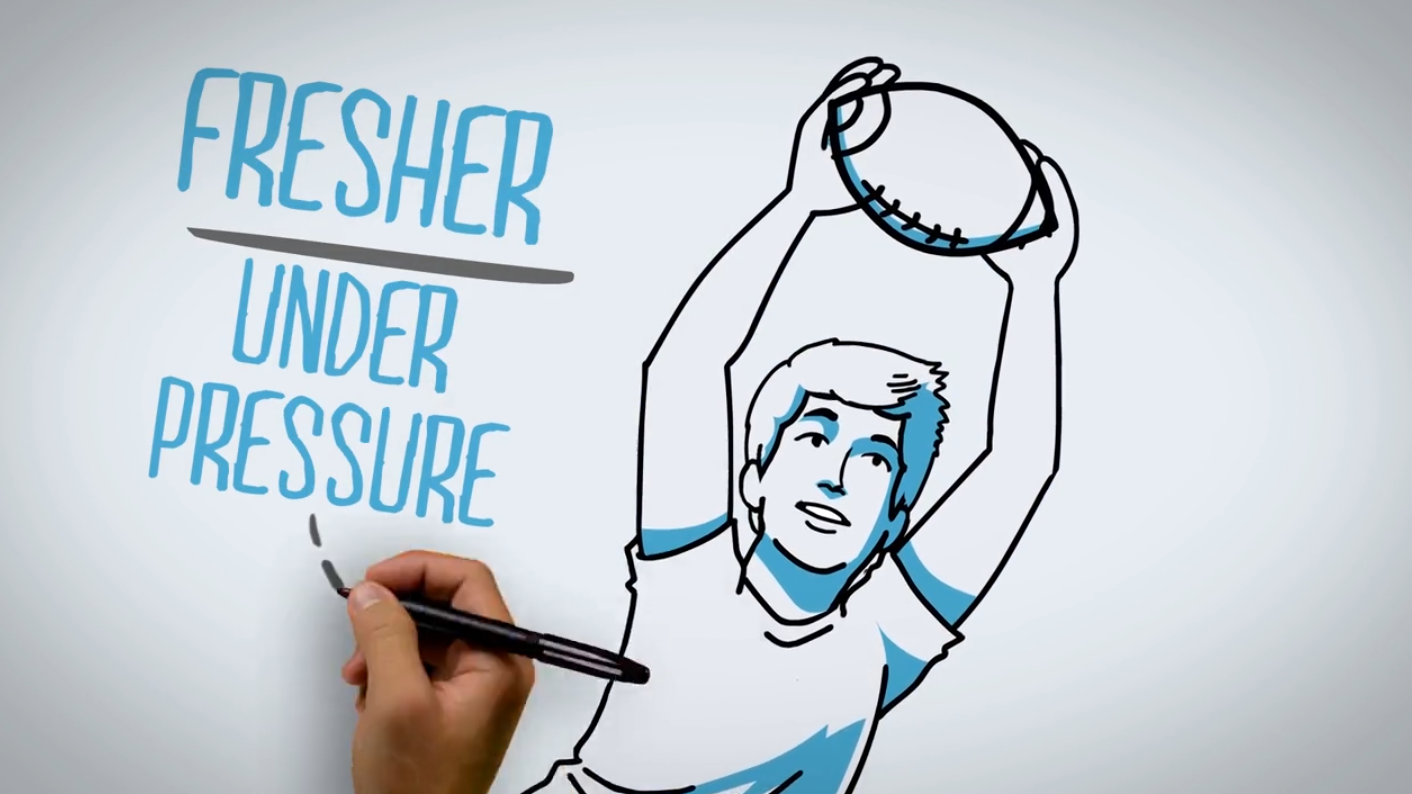The Whiteboard Cartoon and How to "Think" Whiteboard

The whiteboard cartoon and how to “think” whiteboard; yes, this is certainly something you can leave entirely up to your vendor. After all, that’s why you’re working with them, right? Nevertheless, even though it’s great to leave things to the experts, it’s always useful for clients to understand how their vendor thinks and why they make the decisions they do. Understanding this can both help to facilitate conversation plus save valuable time during the initial stages of a project.
Have you ever seen a film that was based on a book you read? It can be a surreal experience because you’re exposed to the same material in two vastly different formats. Usually there are many differences between the book and the film. Some of the differences are small (unimportant deleted scenes, two peripheral characters rolled into one) but some are large (completely different time or geography, change of character motivation, exchanging a sad ending for a Hollywood-friendly happy ending).
All of these changes are made because a book is a different medium than a film; decisions have to made to keep things succinct and powerful. This is why Best Adapted Screenplay is one of the most important and respected Academy Awards. Screenwriters spend years learning how to identify which plot points are truly essential and how to weave them into the finished film.
Thinking whiteboard cartoon is actually a great deal like adapting a book for the screen. There’s usually a wealth of material to choose from, but the hard work comes down to selecting exactly which ideas are important to pursue. Often, clients who are looking for a short 1-2 minute video are surprised to learn just how quickly that time is used up. Here’s a useful formula: 130 words = about 1 minute of screen time.
Just to put that into perspective, the first two paragraphs of this blog alone are equal to almost three minutes of screen time! Bearing that in mind, don’t be surprised if your whiteboard cartoon team needs to refine your ideas to ensure that everything truly important to communicate gets the attention it deserves.
So, having said all that, what are some ways that you can start thinking whiteboard cartoon, even before you approach a whiteboard company?
For one thing, try thinking in terms of bullet points rather than paragraphs. Your first instinct might be to treat a whiteboard cartoon like an animated PowerPoint. Actually, it’s better to imagine your whiteboard cartoon like an animated version of your elevator pitch, with the same time constraints and need for focus. Keep only the most important, essential information and don’t hesitate to jettison anything that doesn’t serve a purpose.
Secondly, remember emotions. Ultimately, all selling is emotional, so even though you might think it’s important to explain the intricacies of how your stock-trading app works, it’s actually far more important to emphasize how the app will benefit people and make them feel.
Lastly, imagine framing the story for your whiteboard cartoon with the experience of one person. Hard limiting the number of characters in your whiteboard video will help to keep the emphasis in the right place and make sure that the story you tell remains intimate and relatable. Whiteboard cartoons are a very intimate form of communication, so take advantage of that and tell an intimate story.
Really, thinking whiteboard cartoon is a question of being able to edit and emphasize, and those are skills that are valuable both for your whiteboard video and for every other aspect of business!
Whether you want to sell, explain, or inspire, no matter how difficult, a whiteboard cartoon can help. Contact us today at 917-477-3282 to get started. We’re ready and eager to help!
- 0 Comments
- Topic: whiteboard cartoon
